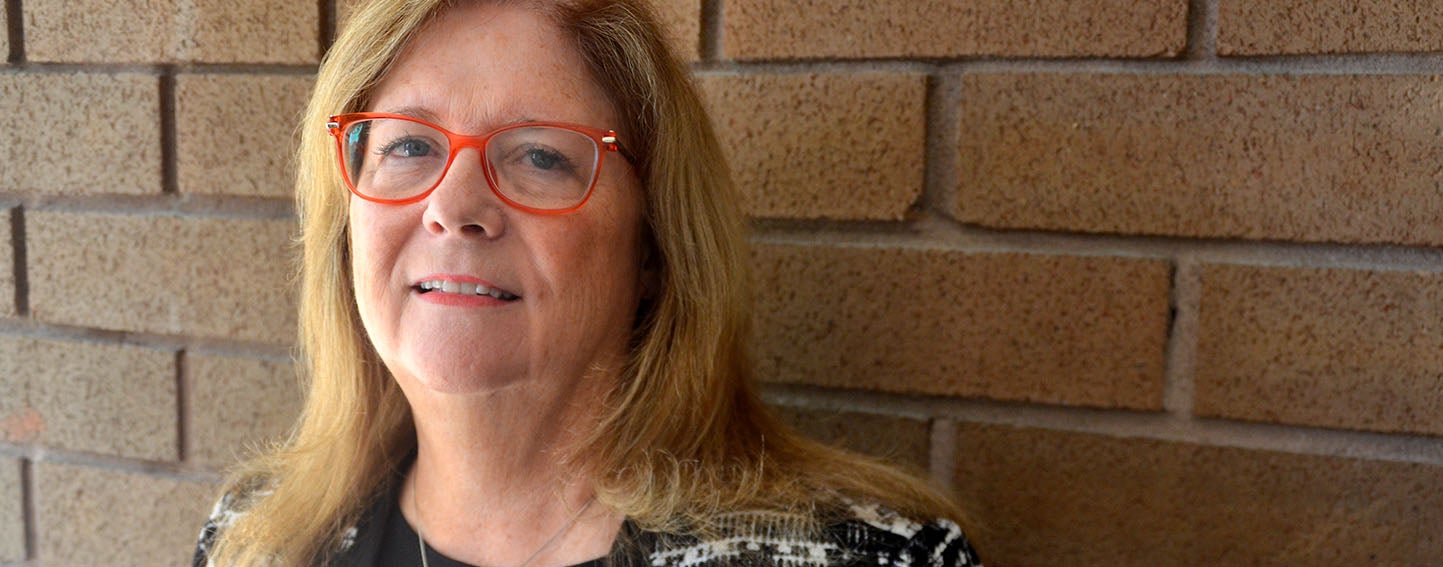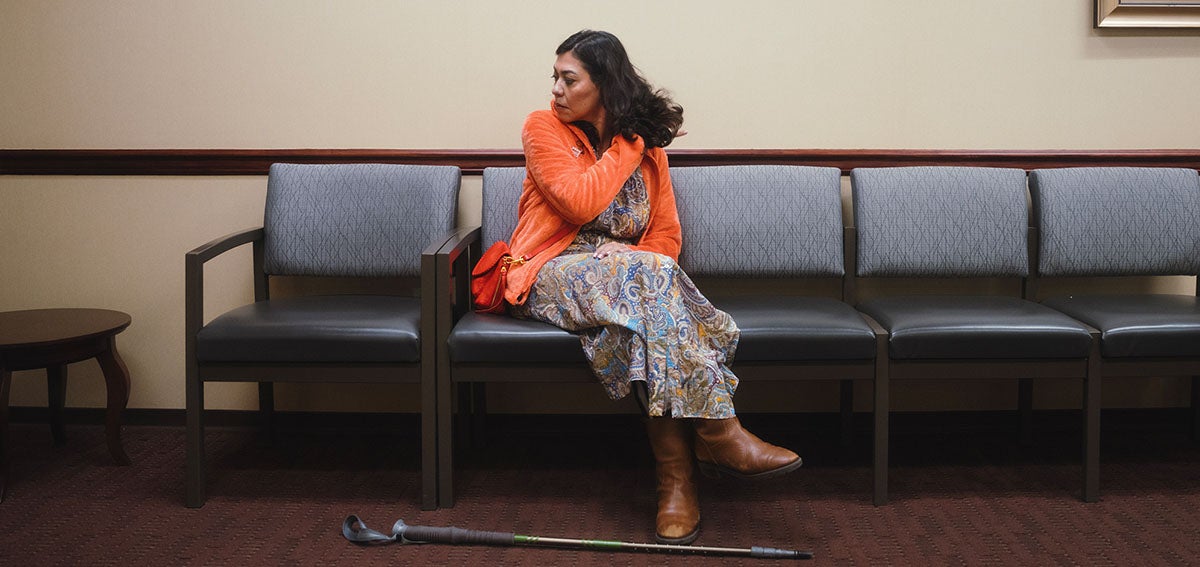
Deborah Kelch has devoted almost 40 years to bringing about changes to ensure that all Californians can get the health care they need. As a legislative staff member, policy consultant, and most recently executive director of the Insure the Uninsured Project (ITUP), she has played a key role in helping California become a leader in implementing the Affordable Care Act (ACA). Despite the law’s positive impact, almost three million California residents remain uninsured — many of them people who are undocumented. Fear of deportation keeps many from seeking health coverage and care until it’s an emergency. Many others are insured but can’t afford premiums and copays. Earlier this year, Kelch announced that she will retire in 2020.
ITUP, which receives support from the California Health Care Foundation, is a leading voice for policies that expand health care access and bring about meaningful health care reform in California. Under Kelch’s leadership, the organization moved its headquarters from Los Angeles to Sacramento, and its staff is frequently called upon to provide information and testimony before the state legislature.
I sat down with Kelch to hear about her career in the cauldron of California health politics and find out what the state’s health care future looks like. Our interview has been edited for length and clarity.
Q: The ACA will be 10 years old in March. How have things changed for Californians over the past decade?
A: The ACA was a game changer. The individual health insurance market was broken. Individuals often were denied coverage, sometimes for even minor health conditions, and preexisting conditions were excluded. If something happened, people could be stuck, unable to get coverage anywhere else, because if they tried to change coverage, insurers might turn them down or charge a higher premium. Some individuals were staying in jobs that didn’t work for them out of fear they couldn’t otherwise get coverage.
The ACA fundamentally changed the landscape, and California fully embraced the challenge. Covered California, the first state ACA exchange, organized and improved the individual market to guarantee coverage for people, regardless of health status or preexisting condition. For the first time, federal subsidies gave people who needed individual coverage financial help to pay the premiums. For the relatively small number of Californians — 2 to 2.5 million — who need individual coverage because they do not have job-based coverage, it was a seismic shift.
California also expanded Medi-Cal under the ACA, bringing into coverage millions of people, primarily childless adults with low incomes. The state’s progress has been phenomenal and unprecedented, cutting the number of uninsured in half. We had a culture shift as people got covered and the state widely marketed the opportunity and the importance of getting coverage. We’d been trying to get more people covered, and we finally had tools to do that.
When the federal administration changed in early 2017, it seemed like every day there was another proposal to repeal or replace the ACA. ITUP was there to analyze the potential impacts of those proposals for California. Given the progress the state had made, the federal attacks reinforced a collective sense of wanting to hold on to that progress and build on it.
Q: What do you think California can do to make sure everyone is covered?
A: California can continue to incrementally bring uninsured people into coverage, primarily through Medi-Cal. Of the three million or so uninsured, more than 50% are undocumented adults. They mostly have low incomes, so they cannot afford to purchase coverage on their own. Most work in jobs that don’t provide health insurance. In 2016, California added undocumented children to Medi-Cal and in 2019 added undocumented young adults. But many undocumented adults and seniors are still excluded.
For many Californians, affordability is still an issue. They’re saying, “Even with the subsidy [available under the ACA for people who earn up to 400% of the poverty level], the costs of premiums and out-of-pocket costs are too much in my monthly budget.” So, this year, California added state funds to give a little more help to people who are already getting federal subsidies and to create first-time subsidies for those earning 400% to 600% of the federal poverty level who aren’t eligible for federal assistance. We will need to monitor these new programs carefully and continue to focus on improving affordability.
Whatever we do, we need to maintain coverage for people who are covered. That will be an ongoing effort and challenge. As just one example of the challenges, the federal immigration climate is causing many families to be nervous about signing up for government programs, and some are choosing to drop out of coverage. We are hearing about children whose parents are undocumented leaving Medi-Cal. At the same time, there are also people eligible for help who aren’t enrolled, and we have trouble reaching them.
Q: On the flip side, what are the biggest hurdles blocking universal coverage?
A: Given the progress to date, it is fair to say that the remaining uninsured are among the hardest to reach in terms of coverage. So, as I said before, we must prioritize reaching out to help people get and stay covered. Making sure every Californian is covered requires a state-level commitment and willingness to invest in the goal. Despite decades of trying, the state has not achieved universal coverage in part because the politics has not aligned around one agreed-upon way to get there. With the impact of the ACA, and Californians gradually coming to expect that everyone should be covered, it may make universal coverage finally possible. We shall see.
Q: Why did you decide to work in health care policy?
A: Early on, I saw that individuals could have very different experiences depending on their income and family situation. When I was young, I was close with my grandmother, and my family took really good care of her. She lived with family members and never wanted for anything. When I was in high school in Gardena, California, I worked as a candy striper in a nursing home. I was struck by the differences in the experience of my grandmother versus the nursing home residents I worked with, many of whom were low income. I thought, “This is what we do with our beloved seniors?” I guess I never got over it. I wanted to make things better.
Q: How did your health policy career take shape?
A: I worked my way through college at UCLA and was fortunate to be chosen as a state senate fellow working for Senator Henry Mello, who chaired the Senate Subcommittee on Aging and was on the Health Committee. When they selected me, I asked if I could work on aging policy. I stayed with the subcommittee (and the Assembly Aging Committee) for about nine years, working on aging, long-term care, and health issues. I was a voracious consumer of the history and the policy and tried to understand the impacts for real people. I soaked it up. If you put a 500-page bill in front of me, I’d work until I could understand and figure it out.
Q: What was the environment like for women working in the legislature in those years?
A: I gradually came to understand, as did most women working in the legislature at that time, that some legislators treated female staff very differently than male staff. Some legislators could even be verbally abusive. Women were often paid less than our male peers for the same work. I experienced both. Looking back, I believe the challenges I faced early on affected my leadership style. I try to collaborate with and empower talented women and have been able to mentor many young women as they built their careers.
When term limits happened, I left the legislature and spent a few years at the California Association of HMOs, again viewing it as a learning opportunity. I had my daughter in 1994 and was planning to stay home for awhile, but I got calls saying: “Since you’re home with your daughter, could you do a little work for us?” And my consulting practice was born. Most of my career has been as a legislative staffer or as an independent health policy researcher, leading me here to ITUP.
Q: One of California’s big health care challenges is that it has a huge population spread out over a vast, diverse area. In many places, health systems are administered at the county level. How can we address the stark differences among the counties and make care more equitable?
A: This is one of California’s greatest challenges and also our greatest strengths. It means that health care can be very different based on the geography, population, and resources in regions around the state. Here is one stark example of how that plays out: The ACA increased benefits in Medi-Cal for substance use disorder treatment, which is a huge improvement. But when ITUP met with our network in the rural north region, they told us: “It doesn’t change anything. We have no providers here. For us, it’s not even a real benefit.” Because of this, policymakers need to have reliable information about the differences and specific challenges in each locality and need to tailor investments and interventions to address the disparities. In addition, regional diversity and local efforts raise up innovation and unique strategies that can benefit the entire state.
Q: How does ITUP accomplish its mission?
A: ITUP creates a feedback loop between policymakers and the health care field. We monitor and analyze proposed state and federal policies, identify potential impacts, and highlight the policy choices. We engage throughout the year with a broad-based network of state and county staff, health plans, providers, community-based organizations, and advocacy organizations in meetings around the state.
We give voice to their concerns and questions and let what they tell us inform our work. Through our publications, testimony, and technical assistance we elevate those concerns for policymakers and health care leaders so they can understand the real-world impacts of the decisions being made at the state level.
This year we focused on care coordination in Medi-Cal. Last year we worked on behavioral health integration and invited several specialized law enforcement teams that deal with people who are homeless or in behavioral health crises to participate. These police agencies are working to address very complex situations in creative ways. That said, folks in the same county or city didn’t always know about the teams, so we were able to facilitate key local connections. Other communities say, “We don’t have such a team. How do you do it?” And they learn best practices they can consider implementing at home.
What we do helps people to lead locally by learning from each other and colleagues around the state. Everything takes leadership. If you hear of a county doing great things, odds are it’s because they have the necessary county support and leadership. In many counties, a nonprofit advocacy group, provider, or health plan might say, “Hey, everybody, let’s get in a room and figure this out.” ITUP replicates that model statewide.
Q: What will you do next?
A: I’m going to read, write, spend time with family, travel, and stay active. I’m hoping to curate a collection of essays by women who cared for their mothers toward the end of life, focusing on how that affected the relationship they had with their mom. If you had a great relationship, or a difficult relationship, how did it change? What did you learn about her and about yourself as a woman? I was a caregiver for my parents for about 10 years, including 2 years I spent caring for my mom. She had lung cancer. The challenges both in our relationship and in making sure she got the care she needed really impacted me. I hope to collect similar stories of other women and publish them online and possibly in book form.
Q: What’s the most important lesson you’ve learned that you think other policy advocates should keep in mind as they carry on this work?
A: It takes a community of dedicated and passionate individuals to deliver and improve the care and services Californians need. I have been privileged to work with so many smart and dedicated professionals, public servants, and experts during my career. Coming to ITUP and working with policymakers and our statewide network underscored the complexities of the challenges and the amazing spirit of innovation and collaboration throughout the state. When we work together, listen to different points of view, and collaborate on finding solutions, we can move the ball — sometimes with historic results. I am so grateful for my experiences and can’t think of a better way to end my career than being executive director of ITUP. It allowed me to do the policy work that I believe is essential to good decision making and to meet and learn from talented people in communities across the state. It has been my honor.
Authors & Contributors

Rob Waters
Rob Waters is an award-winning health and science writer whose articles have appeared in BusinessWeek, Mother Jones, Stat, San Francisco magazine, the San Francisco Chronicle Sunday magazine, the Los Angeles Times, and many other publications. He is the founding editor of MindSite, a digital publication covering mental health news scheduled to launch in fall 2021.




